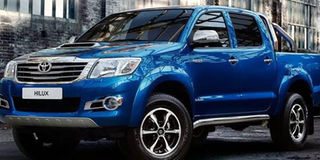Treat your vehicle well and it will serve you

Any advice on good driving will use the words “smooth” and “gentle”. Rightly so. PHOTO | NATION
What you need to know:
Also, you should never drive so gently that you represent an obstruction to the ambient flow of traffic.
There’s a world of difference between smooth-and-gently and either dithering or dawdling.
But among all these variations from moment to moment, I can offer a good principle and a more specific measure of gentleness as a background theme to all your motoring and the whole life of your vehicle. It might be called “Half Measures”.
Any advice on good driving will use the words “smooth” and “gentle”. Rightly so. Smooth and gentle driving will use less fuel, inflict less wear and tear on every component, usually be safer, and always be more comfortable for passengers.
But in practice, what do smooth and gentle mean other than “not jerky” and “not too harshly”? Would that be gentle as if handling an injured butterfly, or gentle as if trying to give an injection to an angry bull?
After all, F1’s Lewis Hamilton drives relatively “gently” if his tyres are too worn, or his fuel is running out, or his brakes are overheating.
Yet he may still be driving at 300 kph and developing cornering forces of 4G! Clearly, “gentle” is written with a very broad brush and its exact degree will vary according to circumstances.
For example, when overtaking, smooth is still good but gentle is entirely the wrong policy. Go! Get on with it! Get in a gear that gives you maximum acceleration and give the accelerator a smooth but firm push. To the floorboards if necessary.
Similarly, on rippled road surfaces “gently” does not always mean “slowly”. Things like corrugations have an “optimum” speed depending on their wavelength, and sometimes a bit faster is a lot smoother.
TRAFFIC FLOW
Also, you should never drive so gently that you represent an obstruction to the ambient flow of traffic. There’s a world of difference between smooth-and-gently and either dithering or dawdling.
But among all these variations from moment to moment, I can offer a good principle and a more specific measure of gentleness as a background theme to all your motoring and the whole life of your vehicle. It might be called “Half Measures”.
Find out and consider your vehicle’s maximum performance. Principally its top speed (check the speed dial ), its top revs (check the red line on the rev counter), and its maximum load (read the handbook).
Then, as far as possible, use the vehicle at not more than half the maximum.
Cruise at half its marked top speed; change gear at half its red line rev limit, try to keep the luggage and cargo (including people) at half its maximum payload.
Crossing those limits may be necessary from time to time, but regard anything above half as harsh.
And at any level, do things smoothly (gradual and progressive changes of speed or direction, not slam-bang-thank you-ma’am).
If you do that, your running costs will come down and the reliability, durability and resale value of the vehicle will go up. And the difference is not small.
Compared with a vehicle used in “half-measures”, a vehicle used harshly and at or near the max will at least double its fuel consumption, tyre wear, engine wear, suspension damage, bodywork fatigue, parts consumption, break-down frequency, and overall rate of depreciation.
And yet there will be very little difference in its utility value or journey times.
Do the math. And pick a vehicle (engine size, payload etc) that will do the work you want it to do well within its capacity. Picking a vehicle that will have to “max” on a daily basis is not efficient; it is a false economy. And that applies to everything from private cars to juggernaut transporters.





